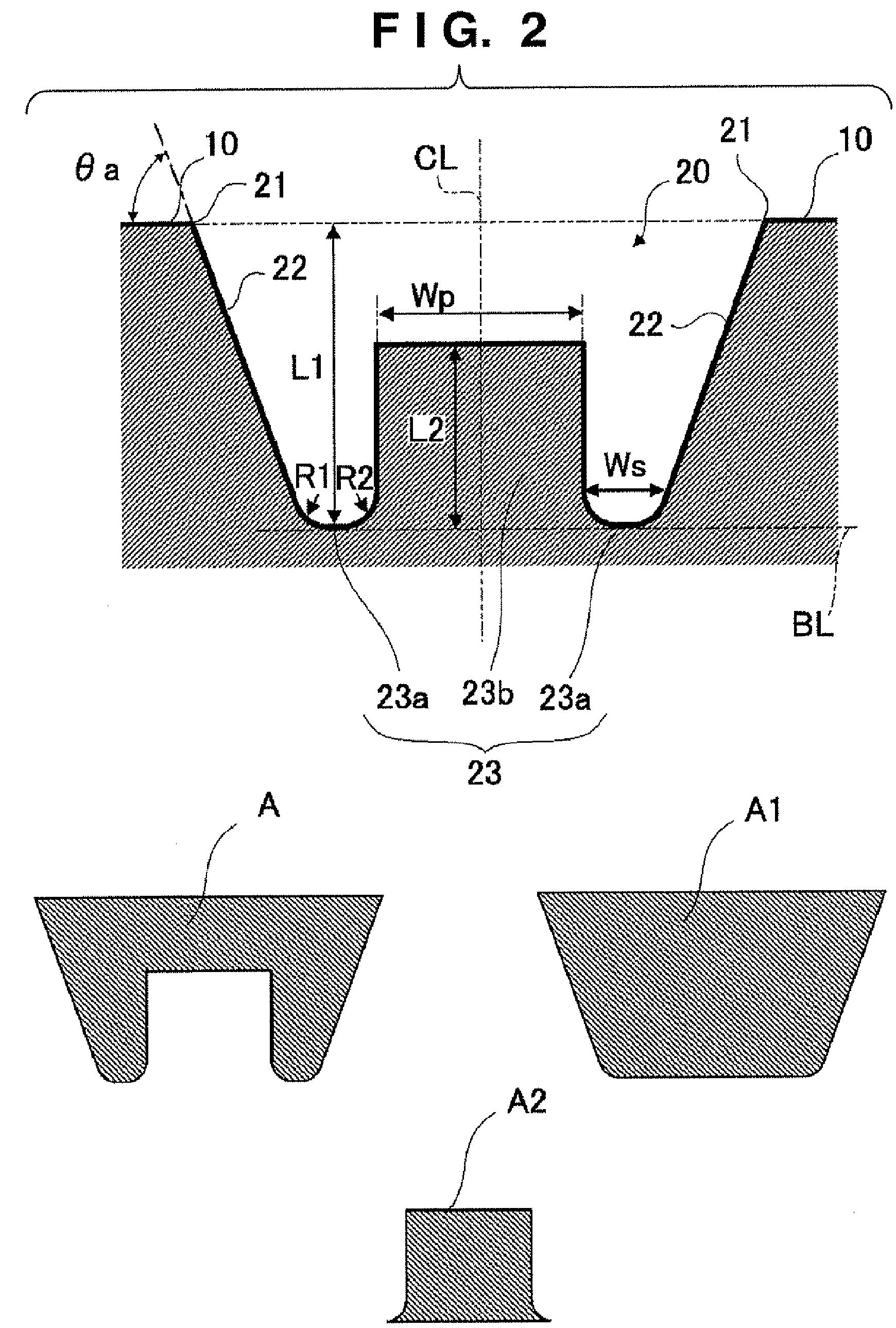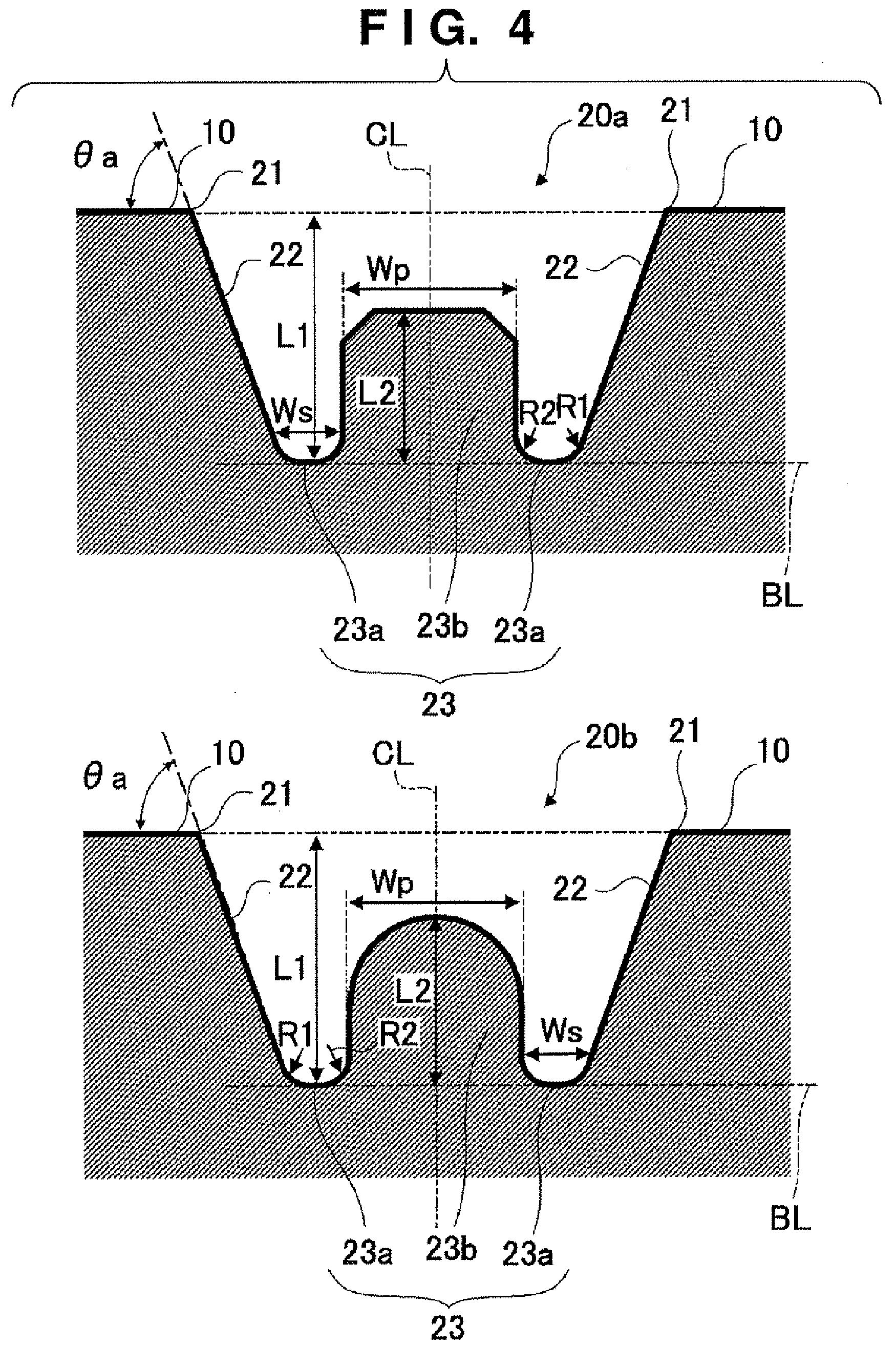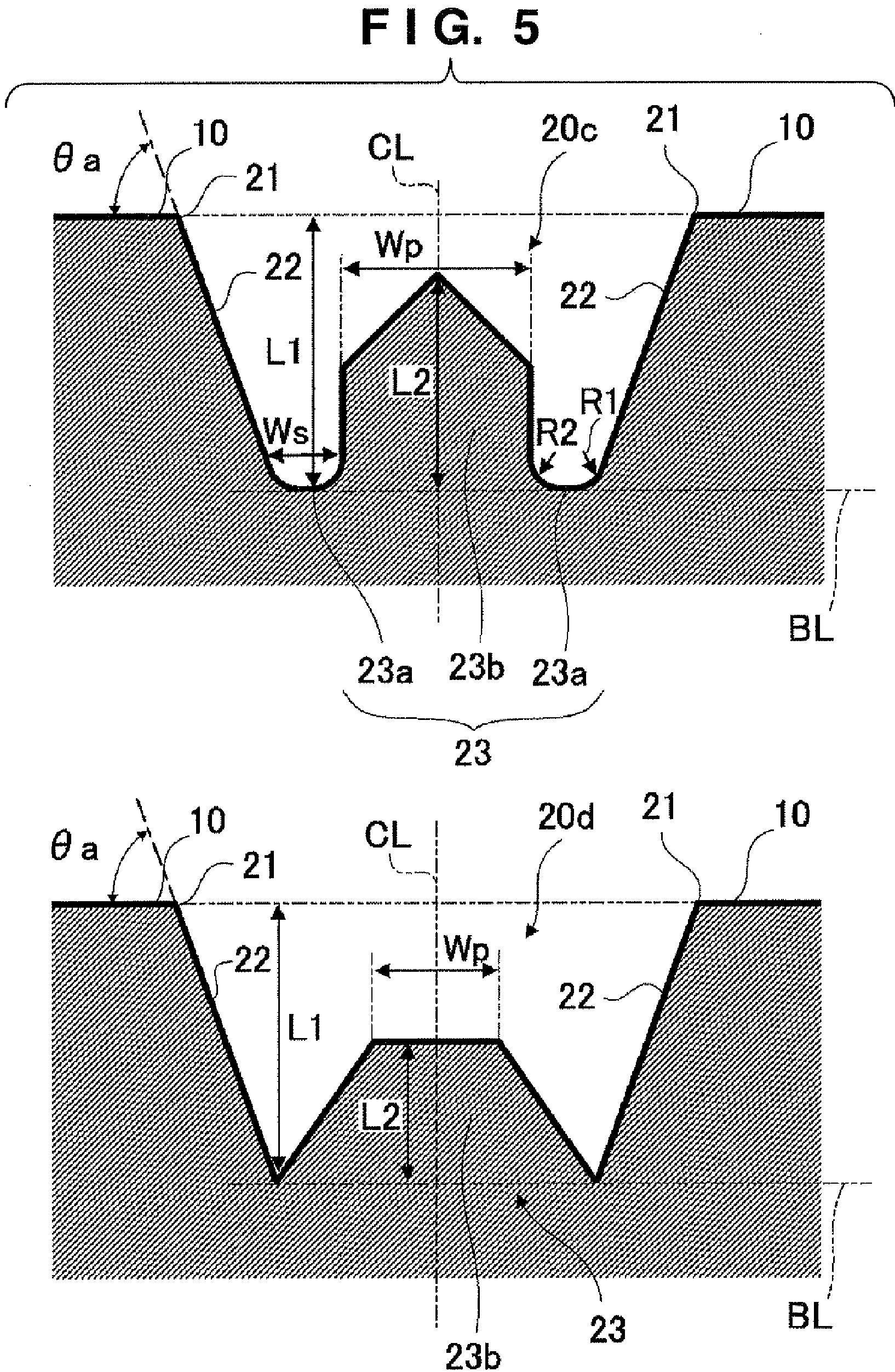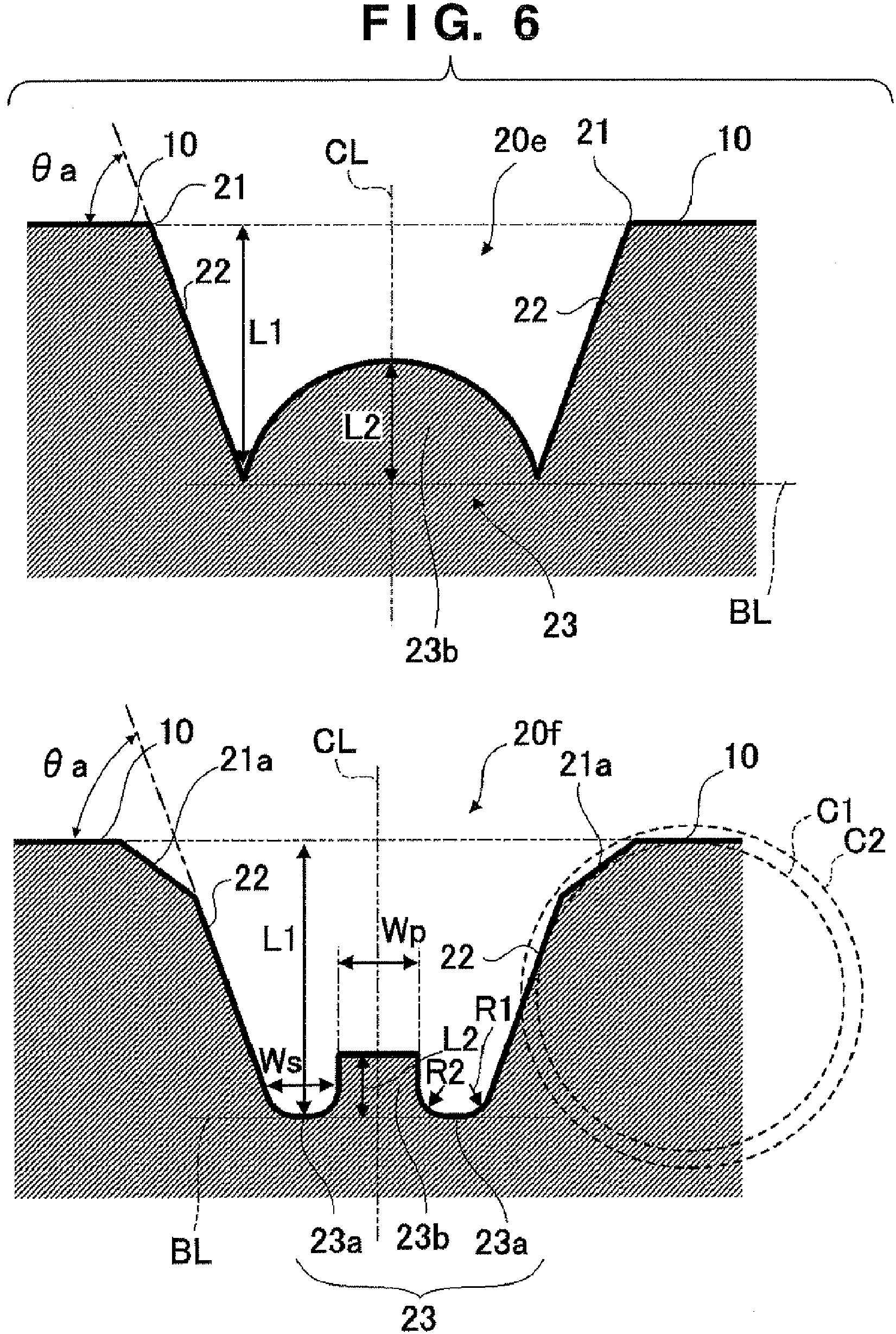Bridgestone’s Take on Grooves, and it is Similar to PING’s Take on Grooves
Back in January I authored a post titled “Grooves of the Future?” in which an interesting patent application by Karsten Manufacturing (aka PING) was examined. Check it out if you aren’t familiar with it because it provides some context to the groove designs disclosed in this post.
Today Bridgestone had a patent application publish addressing the same issues. The application published as US Pub. No. 20090197700 titled “Golf Club Head,” and explains the invention as:
This invention provides a golf club head including a plurality of score lines on the face. In the golf club head according to this invention, the score line includes a pair of side surfaces and a bottom portion having a protruding portion protruding toward the face. An angle between the side surface and the face is not less than 60 degrees. A cross-sectional area A (square inches) of the score line, a width W (inch) of the score line measured based on the 30 degrees measurement method, and a distance S (inch) between the score lines adjacent to one another satisfy A/(W+S) is less than or equal to 0.003.
Check out these groove profiles:





The application goes on to explain:
[0005] Generally, on the face of a golf club head, a plurality of straight grooves are formed parallel to each other in the toe-and-heel direction. These grooves are called score lines, marking lines, face lines, or the like (to be referred to as score lines in this specification). These score lines have an effect of increasing the back spin amount of a shot or suppressing a significant decrease in the back spin amount of a shot in case of a rainy day or a shot from the rough. For this reason, various shapes of a score line are proposed. For example, in the specification of the U.S. Pat. No. 6,733,400, there is disclosed an iron golf club set in which the heads of respective golf clubs include score lines each having a protrusion at its bottom portion, so as to adjust the back spin amount for each club number.
[0006] Factors of a score line which particularly influence the backspin amount are the edge angle of a score line, the depth of a score line, and the like. The smaller the edge angle of a score line, the higher the backspin amount. The larger the depth of a score line, the higher the backspin amount in case of a rainy day or a shot from rough.
[0007] However, according to the rule about the score lines of a golf club head for competitions, a cross-sectional area A (square inches) of a score line, a width W (inch) of the score line measured based on the 30 degrees measurement method, and a distance S (inch) between the score lines adjacent to one another must satisfy A/(W+S) is less than or equal to 0.003 (to be referred to as the area rule, hereinafter). When the edge angle of the score line is decreased or the depth of the score line is increased, the cross-sectional area of the score line increases, and therefore it may not conform to the area rule. On the contrary, when the score lines are formed to conform to the area rule, a sufficient backspin amount may not be obtained.
It is amazing how over 8000 miles can separate golf club designers and yet they can develop, and claim, such similar inventions; although it looks like PING beat Bridgestone to the punch (a July 5, 2007 priority date compared to a January 31, 2008 priority date)! I guess the Golf-Patents blog doesn’t have a large following in Chichibu-shi, Japan.
Dave Dawsey – Monitoring Golf Iron Groove Intellectual Property
PS – YES, sooner or later a major golf publication will discuss this patent application as if they did the research and found it. Throw me a bone once in a while!
PPS – check out the post “Is Your Wedge Lacking the Appropriate Traces?” regarding another Bridgestone invention designed to help with spin
PPPS – check out other golf iron invention posts HERE
